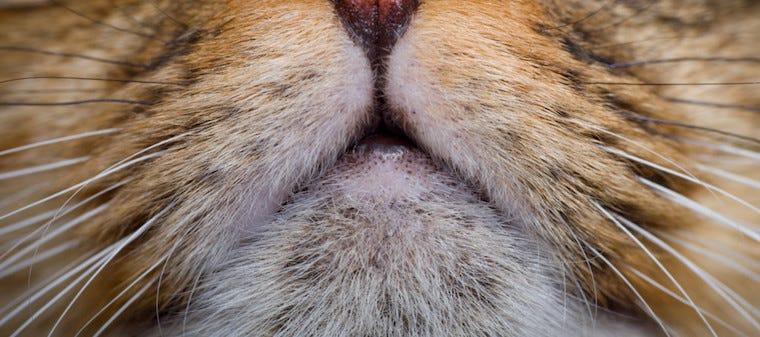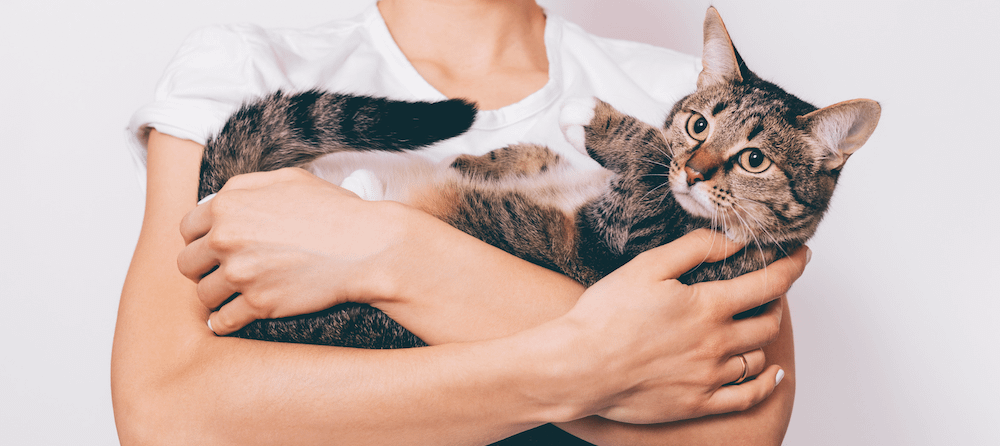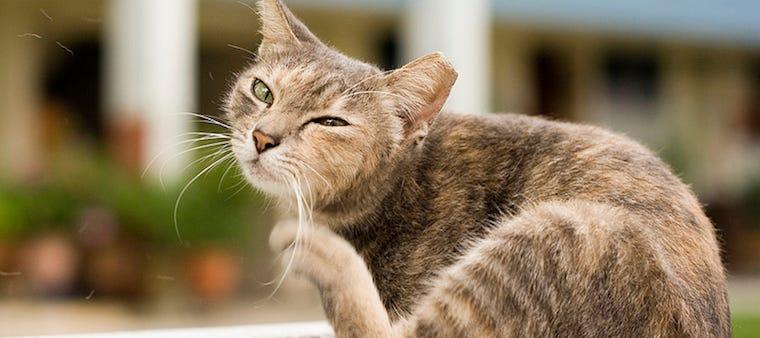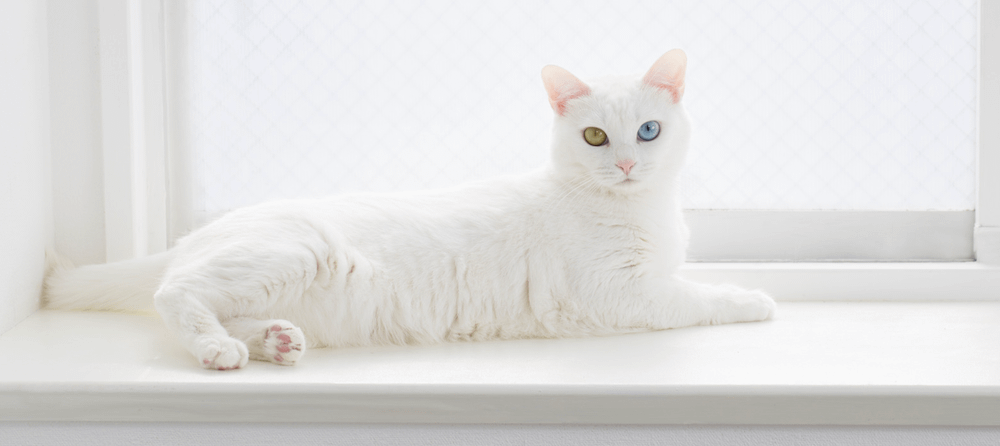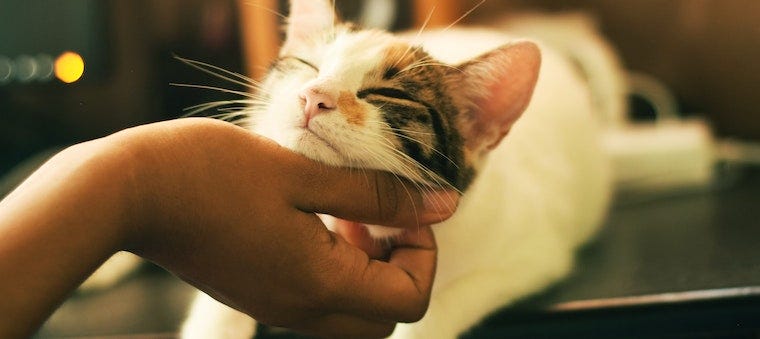Just when you thought the life of a cat couldn’t be beat—permission to sleep all day, groom at their leisure, and get high on catnip—we’re here to throw you a curveball: Did you know that many cats suffer from feline acne? Check out our tips on how to spot, treat, and prevent feline acne below.
What is cat acne?
Can cats get pimples? Acne in cats is thought to arise when hair follicles become clogged with oil from the sebaceous glands. This almost always occurs on a cat’s chin or around the mouth. Just like in humans, feline acne may present as blackheads or whiteheads.
How common is cat acne?
Some cats may experience chin acne once in a lifetime, while others have it continuously. Long-haired cat breeds such as Persians may be more likely to have chin acne.
What causes cat acne?
To most of us, acne seems like a painfully human affliction. So why do cats get it? There is still much to be learned about what causes acne and why. Veterinarians have identified some common causes of feline acne, including the following:
- Bacterial overload from dirty food bowls and/or water bowls
- Stress
- Poor grooming
- Food allergies
- Abnormal sebaceous glands
- Suppressed immune system
- Contact sensitivity/dermatitis
How to identify cat acne

When your cat is relaxed, tilt his face up or gently scratch under his chin so that he lifts it. At first glance, your cat’s chin may appear “dirty,” as if spotted with tiny black dots between the chin hairs. In more serious cases, your cat may develop nodules, bleeding crusts, pustules, hair loss, a severe redness of the skin, and be in pain—which can indicate boils and/or a bacterial infection.
Cat chin mites vs. acne
Mites aren’t as common in cats as chin acne, but may cause similar symptoms. Mites are tiny organisms of the arachnid family that can lead to the inflammatory skin disease in cats known as mange. While both mites and acne can cause redness and rash-like irritation, mites are more likely to cause hair loss and raised lesions.
Cat acne treatment and prevention
Clean your cat’s food and water bowls—and stop using plastic bowls
As Dr. Justine Lee explains in the video above, one of the most common causes for feline acne is the bacterial overload found in your cat’s plastic food and water bowls. Switch to glass or ceramic dishes. You might also consider raising the bowls so that the fur on your cat’s chin doesn’t come in contact with the food and water. Keep in mind, too, that bacteria can still flourish in non-plastic bowls—so make sure to regularly clean your cat’s dishes, as you would your own.
Try over-the-counter treatments
If your cat has a mild case of acne, you can try some over-the-counter treatment options prior to consulting with your veterinarian. Gently wash your cat’s chin once or twice daily with a mild soap or other cleanser. Stridex pads may be used as cat acne wipes, but check with your veterinarian first. Dr. Lee also swears by the home remedy of witch hazel. Simply dampen cotton balls with the herb and apply topically 1-2 times a day.
Vary your cat’s diet
Your cat may be experiencing breakouts due to food allergies, such as wheat, dairy, or certain protein sources. Adjusting their diet to try to rule in or out allergens can be costly and time consuming. A successful trial of a new food takes anywhere from 8 to 12 weeks to see if it’s truly helping; during that time, it’s imperative that your cat not get anything else other than that food unless it aligns with their new diet. Your veterinarian can be a great resource in troubleshooting diet changes to address kitty acne. Be sure to slowly transition between foods to avoid unnecessary gastrointestinal upset.
Visit the vet for stronger treatment
If a case of feline acne can’t be cleared up with the home remedies mentioned above, you’ll want to make an appointment with your veterinarian for further treatment options. Your vet may need to prescribe antibiotics or medicated cat acne wipes and shampoos.
Some acne requires the hair to be shaved to allow for better application of topical medications and breathing of the affected skin. Topical medications and shampoos may include antiseptics, antibiotics, and even antifungals depending on the severity of your cat’s acne. Oral or injectable medications like antibiotics or steroids are necessary in some cases.
What NOT to do
Never use prescription-strength acne medications for humans on your cat. These are likely unsafe for cats and can be highly irritating.
Don’t attempt to “pop” your cat’s pimples, either. This will be a highly unpleasant experience for both of you, and may lead to infection.
Does cat acne go away on its own?
While it is possible for milder cases of feline acne to resolve on their own, much like humans, true resolution often calls for intervention, including environmental engineering (like changes in hygiene, food bowls, etc.), treatments of present infection if indicated, and long-term management to prevent progression of future outbreaks into infections. Small outbreaks can be cleared with minimal management in days to weeks. More commonly, cats afflicted with acne have outbreaks every so often throughout their lifetime.
Feline acne doesn’t have to be as stressful an ordeal as, say, when you experienced breakouts as a teenager. Although it can be uncomfortable for your cat, when in doubt, seek veterinary help.
Sources:

